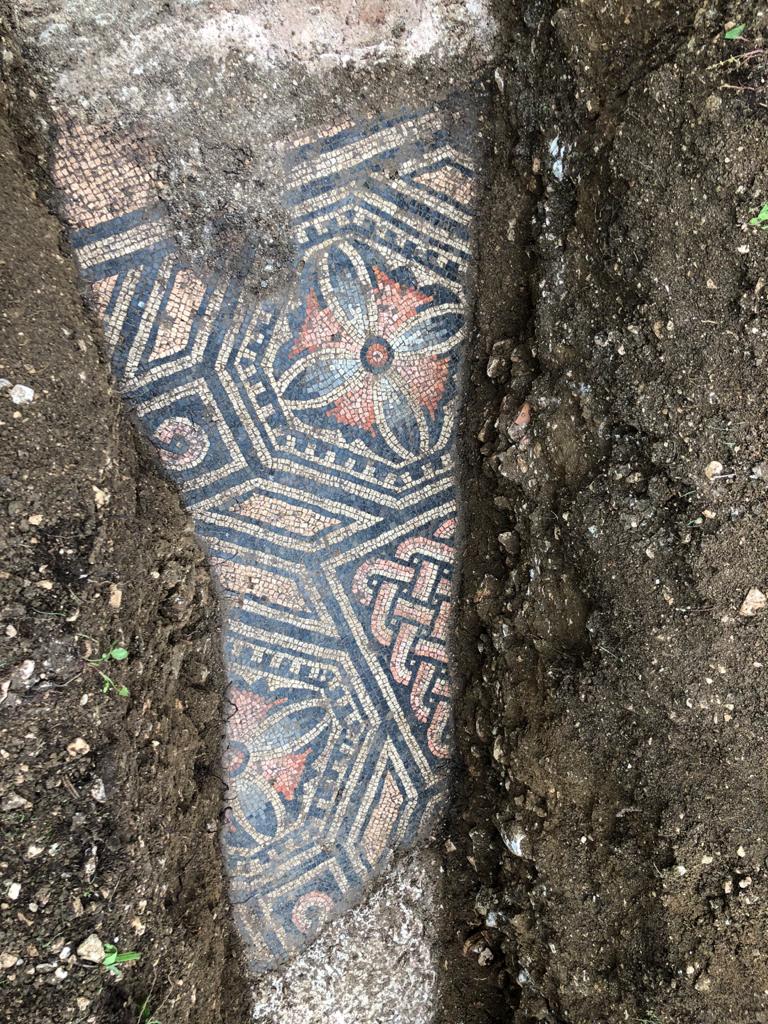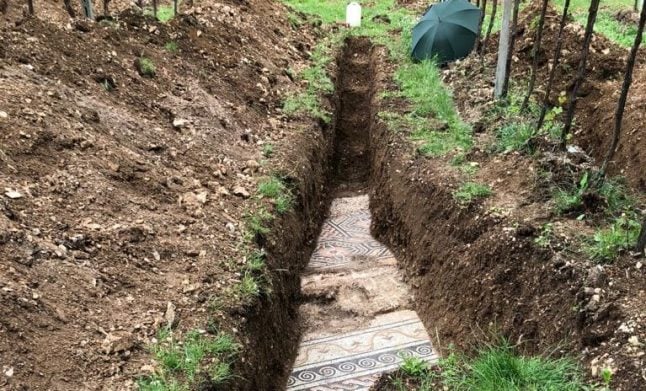The brightly-coloured geometric design, partly unearthed outside Negrar di Valpolicella near Verona, is thought to have been part of a villa archaeologists first started looking for in 1922.
“When I saw the mosaic it was very impressive because of the quality, the well-preserved colours, the preservation of the mosaic itself,” local mayor Roberto Grison told AFP.

Photo: Comune di Negrar di Valpolicella/Facebook
Locals have known for years there were Roman artefacts in their part of the famous wine region.
A survey and some initial digging almost a century ago in 1922 hinted at what lay beneath – and the area of the discovery is called Villa, said Grison.
But until now, there hadn't been any big finds.
A team of Verona-based archaeologists resumed work last year, and returned again in February, but the excavation was soon suspended because of the coronavirus outbreak.
Just a week after work restarted in May, the mosaic was found several metres below a row of vines.
Verona's municipal archaeologist Gianni de Zuccato says the moment they came across the red, brown, grey and white mosaic deep underground was “like entering a time machine”.
“It was an amazing feeling, I confess I could not remain cool,” De Zuccato told AFP, dating the mosaics to around 250-400 AD.
“I felt like a child, going back in a time machine, imagining the era, the people who were here, who lived here, in this hidden and preserved villa.”
The archaeologist said that the villa is thought to cover an area of around 300 square metres.
“But there are other parts we've discovered, service areas, there might be around 1,000 square metres of buildings, on top of which there's the green area, the garden,” he said.
Grison said that the aim now is to shed light on the villa itself and “to make it visible to whoever is interested”.
Experts are now trying to discover the exact extent of the villa complex.
“The result will not come soon and significant resources will be needed,” authorities at Negrar di Valpolicella town hall said.
They added: “The superintendent will now liaise with the owners of the area and municipality to identify the most appropriate ways of making this archaeological treasure, which has always been hidden beneath our feet, available and accessible.”


 Please whitelist us to continue reading.
Please whitelist us to continue reading.
Member comments